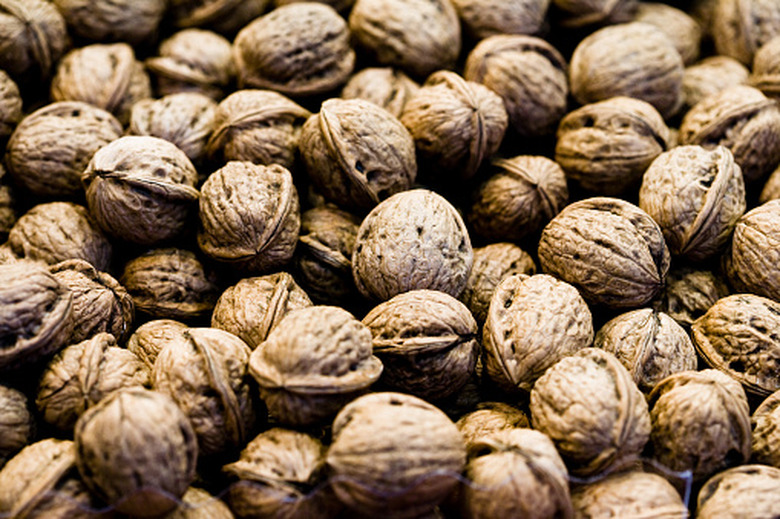Are Walnut Trees Poisonous?
Walnut trees produce a chemical known as hydrojuglone. It is found in every part of the tree. Hydrojuglone by itself is harmless and odorless. However, when oxidized by compounds in the air and soil, hydrojuglone is transformed into a toxic allelochemical known as juglone. Allelochemicals are secretions that essentially poison some types of nearby plants by inhibiting physiological processes, such as germination, growth and nutrient and water uptake. While all types of walnut trees produce juglone, only the black walnut tree typically produces quantities sufficient to impact surrounding plants. Juglone-sensitive plants placed near black walnut will inevitably yellow, wilt and die.
- Walnut trees produce a chemical known as hydrojuglone.
- However, when oxidized by compounds in the air and soil, hydrojuglone is transformed into a toxic allelochemical known as juglone.
Toxicity Range
The greatest concentration of juglone occurs in walnut roots, buds and nut hulls. Consequently, the highest probability of plant toxicity is within the canopy of black walnut trees, where roots, fallen leaves and decaying nut hulls are ever-present and concentrated. However, plants growing within 1/2 inch of a single black walnut tree root are also at risk of encountering juglone. This contact may occur beyond the tree canopy, especially in large tree specimens.
Symptoms of Juglone Sensitivity
Members of the Solanaceous family, which includes tomatoes, eggplants and peppers, are some of the plants most adversely affected by juglone. Symptoms of juglone sensitivity include a progression of leaf yellowing, drooping and eventual plant death. In general, juglone is nontoxic to humans, but it may cause a mild allergic symptoms in individuals who are sensitive to the chemical, particularly during springtime.
- The greatest concentration of juglone occurs in walnut roots, buds and nut hulls.
- Consequently, the highest probability of plant toxicity is within the canopy of black walnut trees, where roots, fallen leaves and decaying nut hulls are ever-present and concentrated.
Garden Design Implications
Place any juglone-sensitive plants outside of the toxic zone of black walnut trees. With young trees, assume a root zone of about twice the height of the tree. This zone will continue to increase with age. The toxic zone of mature trees can extend up to 80 feet from the tree trunk. If this degree of spacing is not feasible, consider placing other plantings in containers or raised planting beds. Alternatively, locate other plants on the other side of a permanent barrier, such as a driveway, to minimize potential contact with toxins.
Toxicity Control
Add organic material to soil. This will increase the population of soil microbials and improve soil drainage capacity, which in turn will metabolize toxins. Routinely rake up fallen leaves, fruit or any other form of debris from under black walnut trees, but avoid using this material as compost or mulch for other plants. In general, tree removal is not advised unless it is accompanied by total root removal as well. Any roots not removed from the soil can continue to emit juglone until they completely decay, which could take years.
- Place any juglone-sensitive plants outside of the toxic zone of black walnut trees.
- Any roots not removed from the soil can continue to emit juglone until they completely decay, which could take years.
